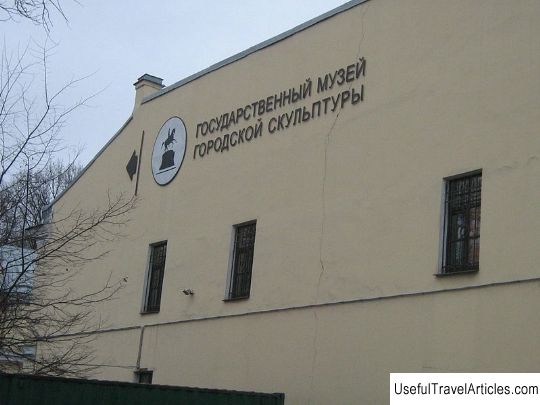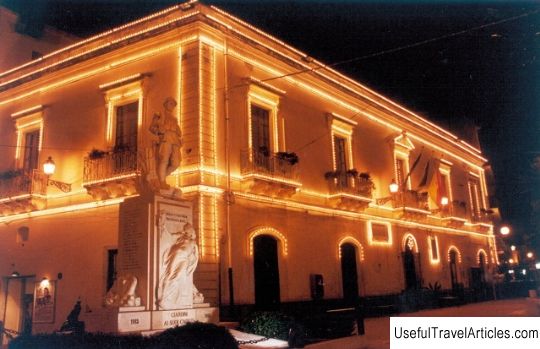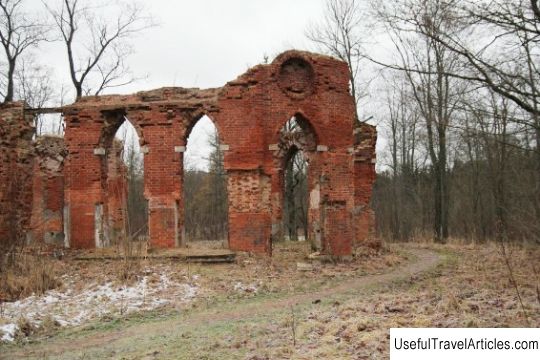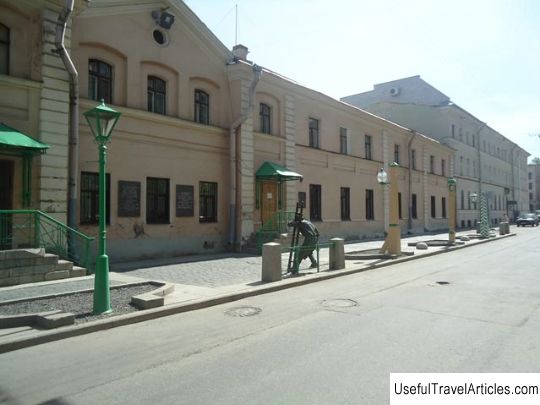Rostral columns description and photo - Russia - St. Petersburg: St. Petersburg
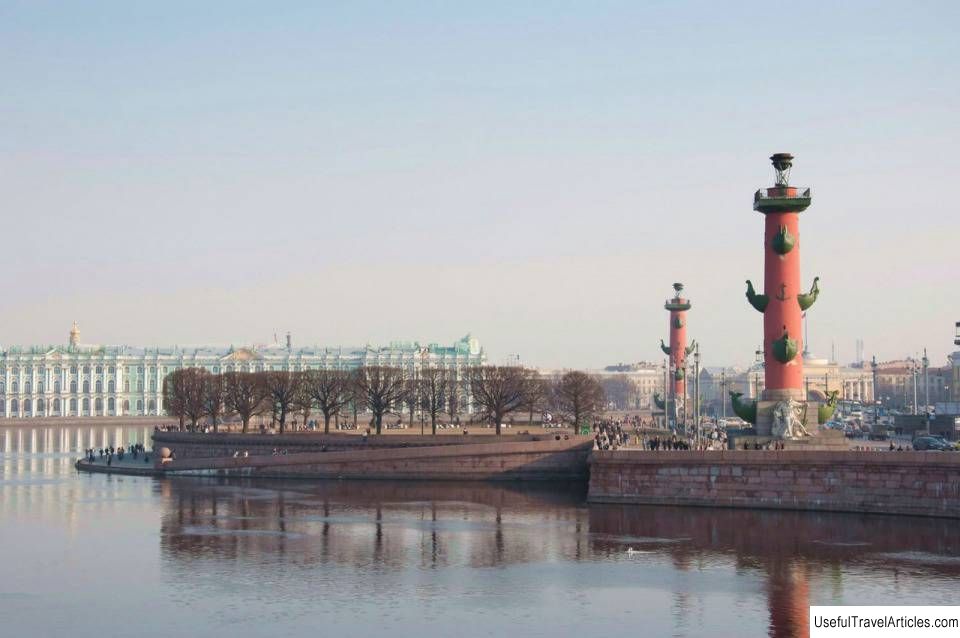
Rostral columns description and photos - Russia - St. Petersburg: St. Petersburg. Detailed information about the attraction. Description, photos and a map showing the nearest significant objects. Photo and descriptionIn the northern Russian capital there are a number of tourist sites, popular attractions that form the unique appearance of the city, create its unique atmosphere: it is simply impossible to imagine this city without them. One of these sights is the Rostral Columns. They rise at the eastern end of Vasilievsky Island - actually in the center of the city. Currently, they do not perform any practical function, but in the 19th century, the columns were port lamps. These lanterns were lit in the dark, and their light also helped to navigate in the fog. History of the columnsThe columns were built in the first decade of the 19th century. The author of the project is Jean-Franus Thomas de Thomon . It was he who came up with the idea to place on the columns as decorations bows of warships - rostra (translated from Latin the word "rostrum" means "beak"). More precisely, the custom to decorate the columns in this way existed in Ancient Rome : those who won a naval battle took the rostras of defeated ships as trophies and, returning home, put them on general review. This was evidence of military valor, strength and should have frightened enemies. The first such column appeared in Rome around 340 BC . In the 19th century, a French architect recalled this ancient Roman custom and decided to revive it, glorifying the power of Russia as a maritime power.
Speaking about the construction of columns, one cannot but mention Samson Sukhanov - the famous stonecutter at that time. Coming from a family of poor peasants, he achieved wide fame only thanks to his work and talent. French sculptors also worked on the creation of the columns: they made statues depicting the sea gods ; these sculptures can be seen at the foot of the columns. The structure and architectural features of the columns The height of each column is thirty two meters . They are covered with plaster and painted in a noble dark red (terracotta) color. The architect who designed the columns chose the Doric order , as it is the most strict, restrained, courageous of all ancient Greek orders (differing from the graceful Ionic order and the luxurious Corinthian one). One of the lanterns points the way to the arm of the Neva, starting at the Palace Bridge; another lantern helps to reach the branch that branches out from the river at the Spit of Vasilievsky Island. four statues can be seen at the foot of the columns. They depict sea gods and patrons of trade. There is an erroneous version, according to which these sculptures are allegories of Russian rivers: female figures represent Volga and Neva , male - Dnieper and Volkhov . But this version appeared relatively recently and it does not correspond to the architect's intention at all. There is another strange version about who the sculptures depict: according to it, one of the male figures is the fisherman Vasily , who once lived in these places (hence the name of the island - Vasilyevsky), and located nearby, a female figure depicts his beloved Vasilisa . This version is urban folklore and has nothing to do with the truth. Initially, it was decided to make sculptures from bronze (according to another version, from cast iron), but later the architect abandoned this idea, since the selected metal was very difficult to process in the right way. It was decided to replace bronze with lime tuff . This material has the properties that facilitated the work of sculptors and helped them achieve the best results: in the ground, tuff is elastic and soft, and in the open air it quickly becomes hard and durable. Each column has a observation deck , which can be reached by a spiral staircase located inside the column. There are huge bowl-shaped lamps on the observation platforms. These lamps are installed on special tripods (the structure resembles antique altars). Once upon a time, resin torches burned on the viewing platforms of the columns. Later, the bowls of the lamps, which contained the wicks, were filled with hemp oil . It burns beautifully, forming a tall column of fire. This light helped ships find their way to port at night or in dense fog. But hemp oil had one serious drawback: when it burned, a whole fireworks of blazing oil splashes flew over the bowl, and this was not at all safe. Falling from a height, this spray often burned passers-by. In the mid-1890s, hemp oil was replaced by electricity . But the application of the new method of lighting proved to be extremely expensive, so the use of electric column lamps was soon discontinued. In the 50s of the XX century, the lanterns were gasified . This method of lighting turned out to be much more economical. Nowadays, famous lanterns are lit only on especially solemn occasions (for example, on major holidays such as New Year's or Victory Day): then 7 meters high bright orange streams of fire rise into the sky of the northern Russian capital. But on holidays, the lights do not burn all day, but only at certain hours, according to the schedule of celebrations. It should be noted here that at present some historians doubt that the columns were used as lighthouses (no one denies their use as port lanterns). Such skeptics emphasize that usually lighthouses were not placed on river banks (with the exception of some rare cases), and even less often you can hear or read about lighthouses. installed in the central part of the city. To this they are often objected that the climatic conditions of the northern Russian capital and the waywardness of the river, on the banks of which the lanterns are installed, are sufficient arguments in favor of the fact that the columns were indeed used as lighthouses for a long time. Interesting facts The history of the columns has more than two centuries. It is inseparable from the history of the city, one of the "calling cards" of which are these architectural structures. But still, the columns have their own history, many unusual events and interesting facts are associated with them. Some of them are: - In the early 30s of the XX century, the columns were captured on color slides by the famous American photographer and traveler Branson Deco . - In the 40s of the XX century, during wartime, the convoys were badly hit by shelling . The decor was broken and rusty. In the late 40s, the metal decorations were replaced with duplicates, which were made from polished copper sheets. The sculptures at the foot of the columns were also seriously damaged; these parts of the architectural monuments were also restored. - The image of the columns can be seen on the banknote of fifty rubles . For this reason, many guests of the capital are photographed against the background of this landmark, holding a bill in their hands. - Last the reconstruction of the famous columns was carried out at the turn of the 20th and 21st centuries. The restoration of architectural structures was carried out by high-level specialists, employees of the State Hermitage. The summer of 2011 was marked by two unusual incidents involving the Rostral Columns. In the first week of summer, the door to the staircase of one of the columns was broken open by several hooligans. Their goal was to get inside the column. Fortunately, their actions did not cause any damage to the historical and architectural monument. Almost two and a half months later, at the end of August of the same year, a certain man (whose name is unknown) entered the observation deck of one of the columns and lit a lantern by opening the gas valve. Firefighters immediately went to the scene. The fire was extinguished and the incident ended. No one was hurt by the hooligan actions of a man who arbitrarily lit the flame of the famous column-lantern. - In 2014, the column-lanterns were lit in honor of the Paralympic Games (an unprecedented incident in the history of this architectural landmark). From them the Paralympic flame was lit, which then, according to tradition, was passed on through the relay. In order to "lower" the fire from the observation deck, a special pyrotechnic cord was used. In order to "lower" the fire from the observation deck, a special pyrotechnic cord was used. In order to "lower" the fire from the observation deck, a special pyrotechnic cord was used.           We also recommend reading Goynuk Canyon description and photos - Turkey: Kemer Topic: Rostral columns description and photo - Russia - St. Petersburg: St. Petersburg. |
